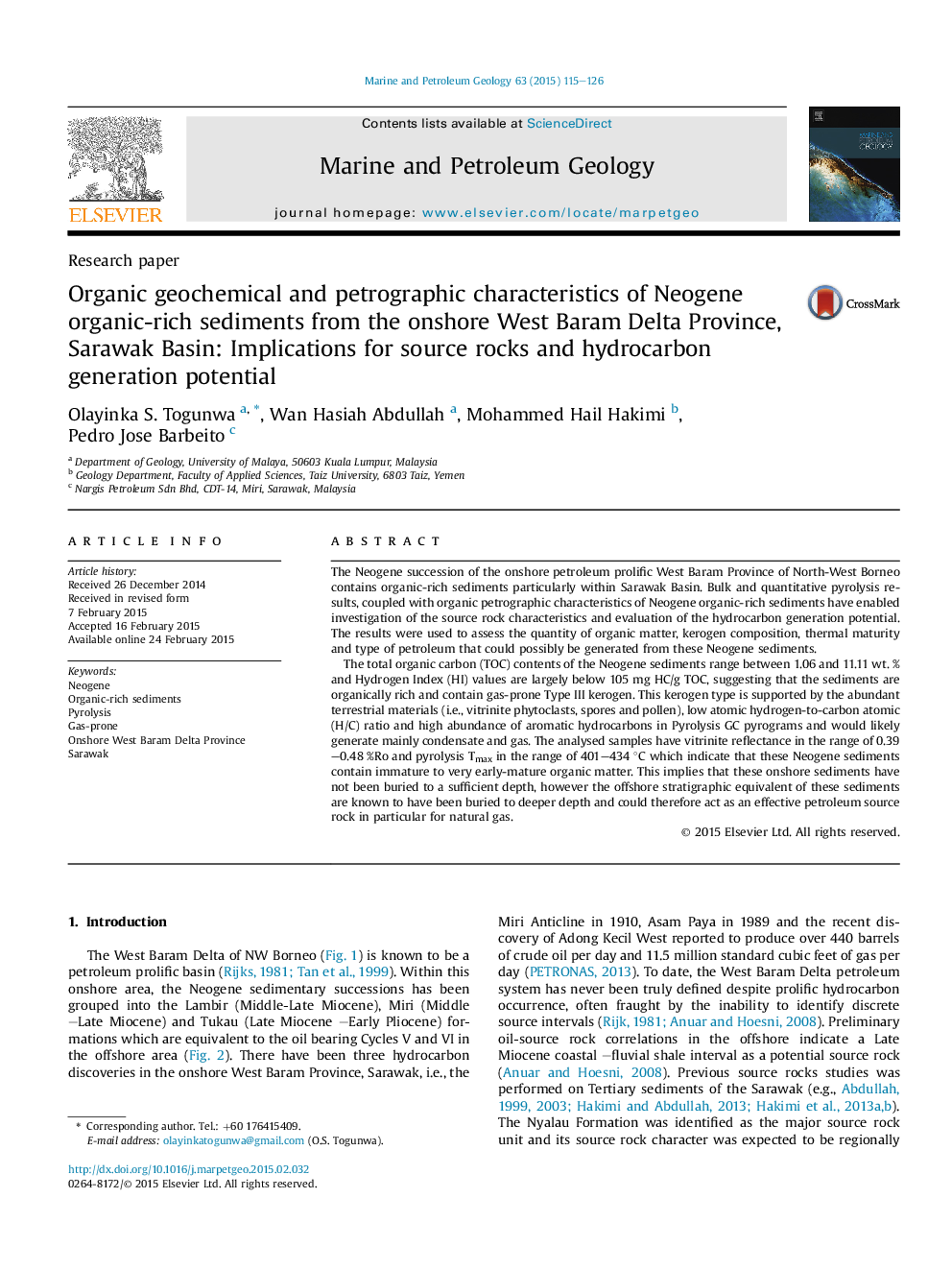| کد مقاله | کد نشریه | سال انتشار | مقاله انگلیسی | نسخه تمام متن |
|---|---|---|---|---|
| 6435201 | 1637162 | 2015 | 12 صفحه PDF | دانلود رایگان |
- We report low variability in the TOC content in the Lambir, Miri and Tukau Formation except in carbonaceous sandy facies.
- The organic matter is predominantly Type III kerogen with potential to generate more gas with minor waxy oil.
- The organic matter is thermally immature for hydrocarbon expulsion.
The Neogene succession of the onshore petroleum prolific West Baram Province of North-West Borneo contains organic-rich sediments particularly within Sarawak Basin. Bulk and quantitative pyrolysis results, coupled with organic petrographic characteristics of Neogene organic-rich sediments have enabled investigation of the source rock characteristics and evaluation of the hydrocarbon generation potential. The results were used to assess the quantity of organic matter, kerogen composition, thermal maturity and type of petroleum that could possibly be generated from these Neogene sediments.The total organic carbon (TOC) contents of the Neogene sediments range between 1.06 and 11.11 wt. % and Hydrogen Index (HI) values are largely below 105 mg HC/g TOC, suggesting that the sediments are organically rich and contain gas-prone Type III kerogen. This kerogen type is supported by the abundant terrestrial materials (i.e., vitrinite phytoclasts, spores and pollen), low atomic hydrogen-to-carbon atomic (H/C) ratio and high abundance of aromatic hydrocarbons in Pyrolysis GC pyrograms and would likely generate mainly condensate and gas. The analysed samples have vitrinite reflectance in the range of 0.39-0.48 %Ro and pyrolysis Tmax in the range of 401-434 °C which indicate that these Neogene sediments contain immature to very early-mature organic matter. This implies that these onshore sediments have not been buried to a sufficient depth, however the offshore stratigraphic equivalent of these sediments are known to have been buried to deeper depth and could therefore act as an effective petroleum source rock in particular for natural gas.
Journal: Marine and Petroleum Geology - Volume 63, May 2015, Pages 115-126
